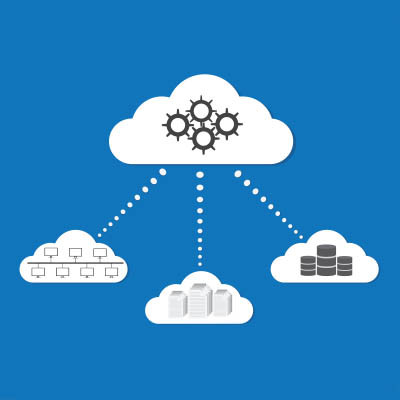Ferrum Technology Services Blog
When it comes to being productive, most people think of time management tools or multitasking strategies. One of the most overlooked factors in productivity is simply feeling good. That means physically, mentally, and emotionally. On days when your mood is high and your energy is up, work tends to feel easier and more manageable. That’s no coincidence. Productive individuals understand that how you feel directly impacts how you perform.
Multitasking might commonly be seen as a super skill that all employees and business professionals should master, but is it really all it’s cracked up to be? The truth of the matter is that multitasking doesn’t work, even if it looks like it does. In fact, all it succeeds in doing is making you work slower while increasing your stress and decreasing productivity.
Running a small business is no easy feat, especially when it comes to managing supply chains. You’ve got to keep track of suppliers, shipments, inventory, and customer demands—all while keeping your sanity. Luckily, technology is here to help. Let's break down some of the key tech tools that small businesses are using to make their supply chains smoother and more efficient.
Decisive decision-making is a business staple. Without it, nothing would get done. Picking and choosing what to stay flexible about is one of the biggest question marks you can have when running a business. One aspect of your business that you always need some wiggle room in is your IT. This month, we take a look at what technology you should prioritize flexibility in and how to achieve that goal.
All of your workers depend on the success of your business. A lot of times, however, it doesn’t always seem to managers that they understand that concept. They probably aren’t just slacking off, they probably are a little burned out. Deloitte estimates that approximately 8 out of 10 wage workers show some signs of burnout. Since any lack of productivity is wasted money, you need to do what you can to ensure your employees have the resources they need to overcome burnout.
Every organization relies on its IT to be available when needed. Some businesses can’t function at all without them. However, if a business isn’t keeping up with the management and maintenance of its IT, it can lead to downtime. Today, we’ll explore proactive IT maintenance strategies and how they help businesses minimize downtime in various ways.
Technology has empowered us to achieve more than ever, but with that progress comes increased expectations for everyone. This means greater productivity, and the pressure to perform can be relentless at times, making it crucial to find efficient ways to manage our tasks. Unfortunately, there is a natural limit to how much we can accomplish, and certain challenges can push us to that limit faster. Today, we want to explore two of the most common productivity pitfalls.
We all share a lot of data. There’s everything shared for professional purposes, of course, but there’s also all the casual things that we send back and forth—chats, requests to have people to pick up things on the way home, and (naturally) memes and pet pictures.
Most of this is sent off without a thought. However, let’s take a moment to think about it for a moment… is there an impact to all this data being sent around?
Technology plays a crucial role regardless of a company’s size or growth stage. Therefore, having an IT infrastructure that can adapt to changes in business scale is essential.
Let's discuss the significance of a suitable IT infrastructure and explore best practices for tailoring it to fit your business needs.
Whether you like it or not, change comes for us all—particularly for businesses. Any organization that hopes to see any significant growth or innovation will be subject to change. Your organization should be capable of working with change, and when it comes to factors that can influence how well you adapt to change, there is no greater tool than your company’s IT.
Information technology, or IT, is an indispensable component for most contemporary businesses and serves as the backbone of their operations. To ensure a smooth operational infrastructure, it is crucial that businesses manage their IT in the most effective manner possible.
One such way businesses can do this is through working with a managed service provider, or MSP. These types of arrangements can provide businesses with clarity and ease of mind as it pertains to IT and operations.
Have you ever tried to introduce new technology to your team, only to have your efforts at improving your business’ efficiency bounce off of your apathetic and frustrated employees who just don’t see the benefits? You’re not alone; it’s difficult to teach old dogs new tricks, as they say. Granted, it’s not impossible, and your team can (and should) be able to get on board with any new implementations, provided you do some initial legwork.
Establishing and nurturing positive customer relationships stands as important for any business. A vital tool in achieving this goal is the implementation of a customer relationship management (CRM) platform. While many CRMs share common features, some offer more advanced capabilities at a higher cost. This month, we will explore the suitable CRM options for businesses at different levels.
Self-service checkout registers are incredibly popular with Gen Z, and while there are differing opinions on them and their impact on the workforce, there’s no denying that they are here to stay. That said, there is much discussion on whether or not biometric payment processing would make for a more efficient method of checkout. Spoiler alert: it doesn’t, and it’s not welcome for either consumers or organizations.
Downtime in a business context can be considered a "business predator" because it can have detrimental effects on a company's operations, profitability, and overall success. Downtime refers to the period during which a business' critical systems, processes, or equipment are not functioning as intended. Here are some reasons why downtime is often seen as a threat to businesses.
Financial Impact
Downtime can result in significant financial losses. When key revenue-generating systems or production processes are unavailable, businesses may lose sales, incur extra expenses, or face penalties for failing to meet contractual obligations. Downtime can also prevent a business from pursuing new opportunities or responding to market changes. In a rapidly evolving market, missing out on opportunities can have long-term consequences, and can be the difference between business growth and stagnation.
Operational Impact
Downtime leads to decreased productivity as employees cannot perform their tasks efficiently. This results in wasted time, missed deadlines, and a drop in overall output. In cases where downtime is due to data loss or system failures, it can result in the loss of critical information, which can be difficult or impossible to recover. This can have severe consequences for businesses, especially when it comes to sensitive or irreplaceable data. Frequent downtime can demoralize employees who must deal with the frustration and stress of interrupted work. Low morale can lead to higher turnover rates and decreased employee engagement.
Customer Impact
Prolonged or frequent downtime can do significant damage to a company's reputation. Customers and partners may perceive the business as unreliable, which can be challenging to overcome. Also, these unfortunate companies may find it challenging to compete effectively in markets with companies that show better reliability.
If you struggle with downtime, you can do better. If you don’t, you need to ensure that continues. The IT professionals at Ferrum Technology Services can help. We can introduce you to technologies and strategies that are designed specifically to reduce downtime and improve operational efficiency. Get a professional perspective by calling (847) 697-3282 today.




















